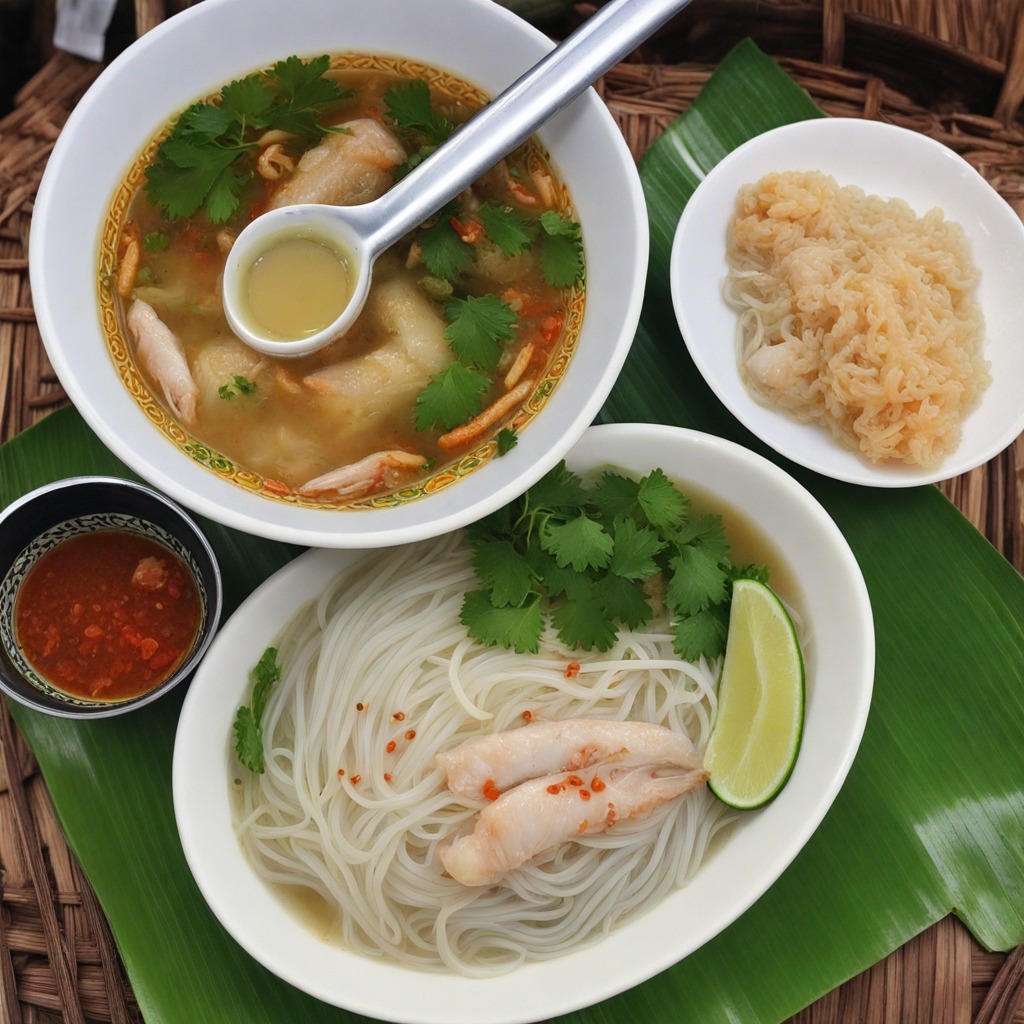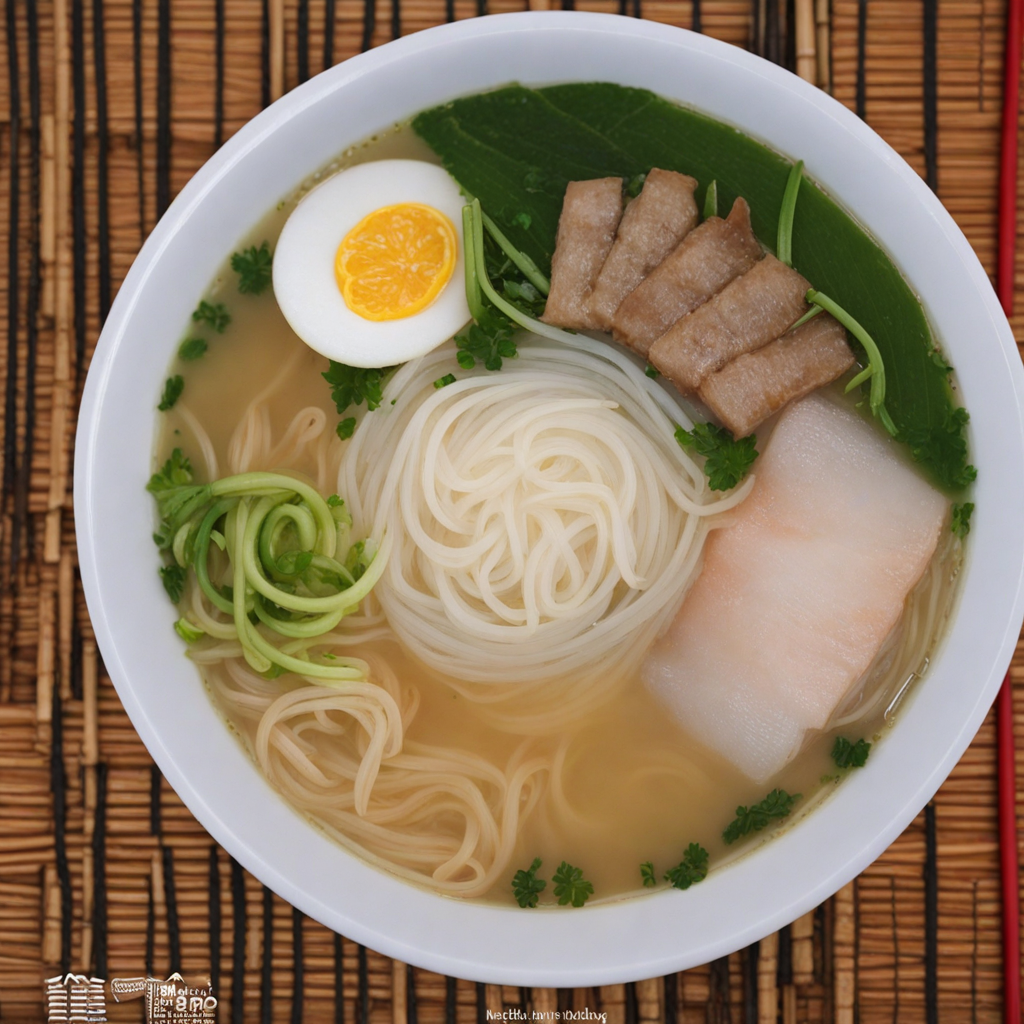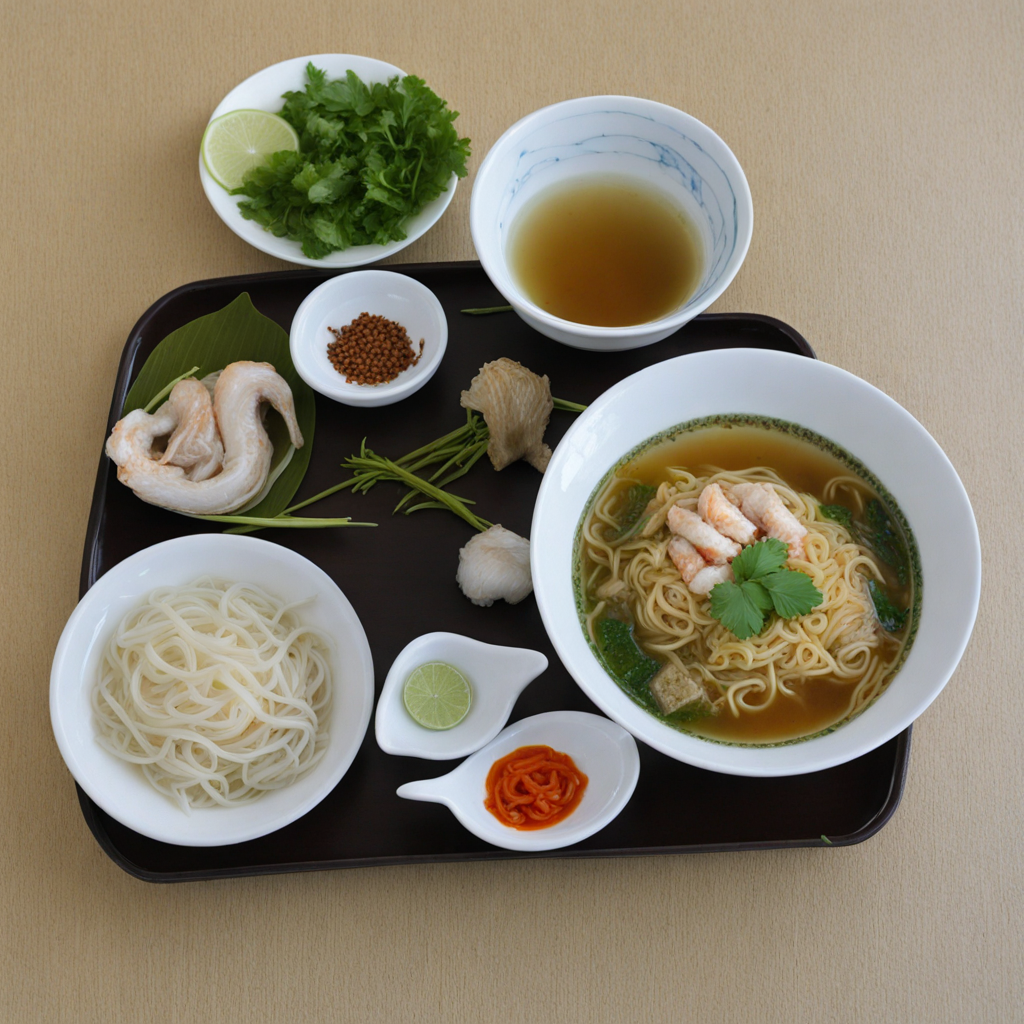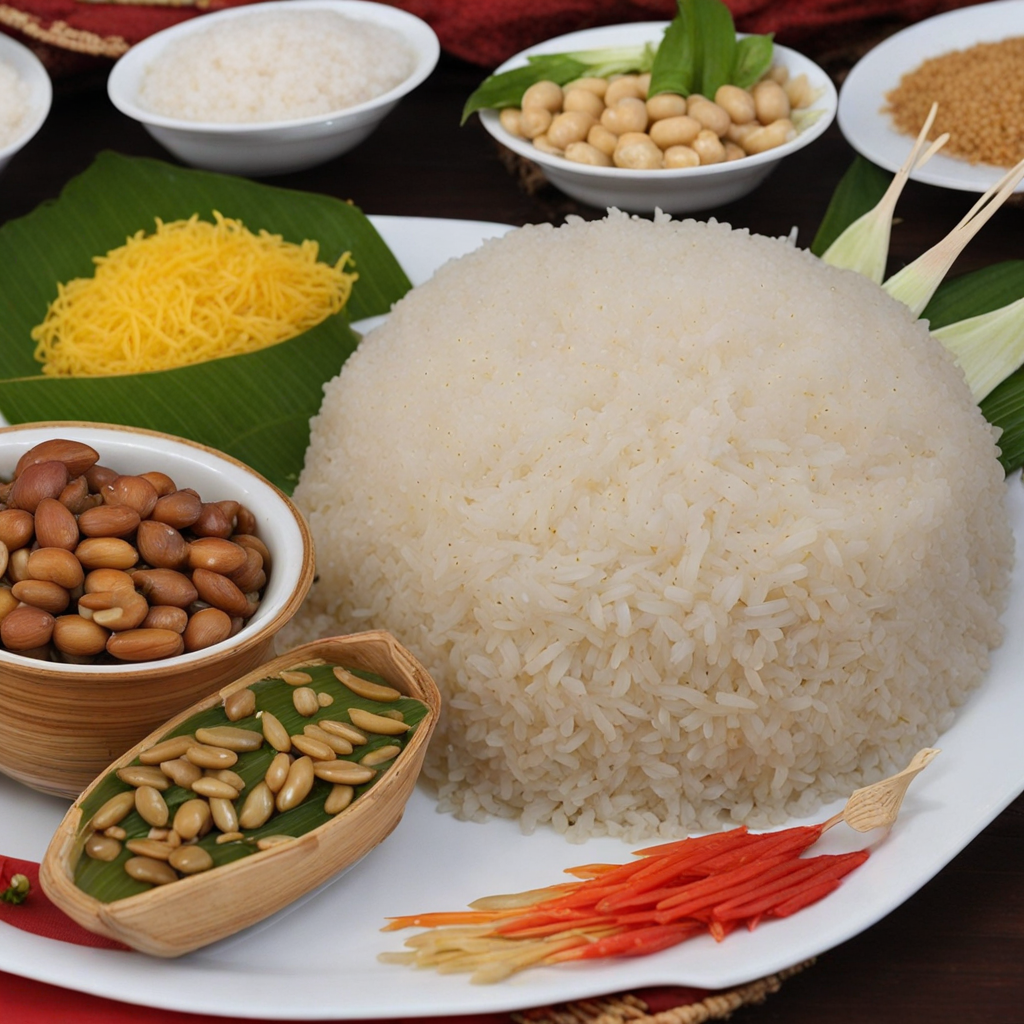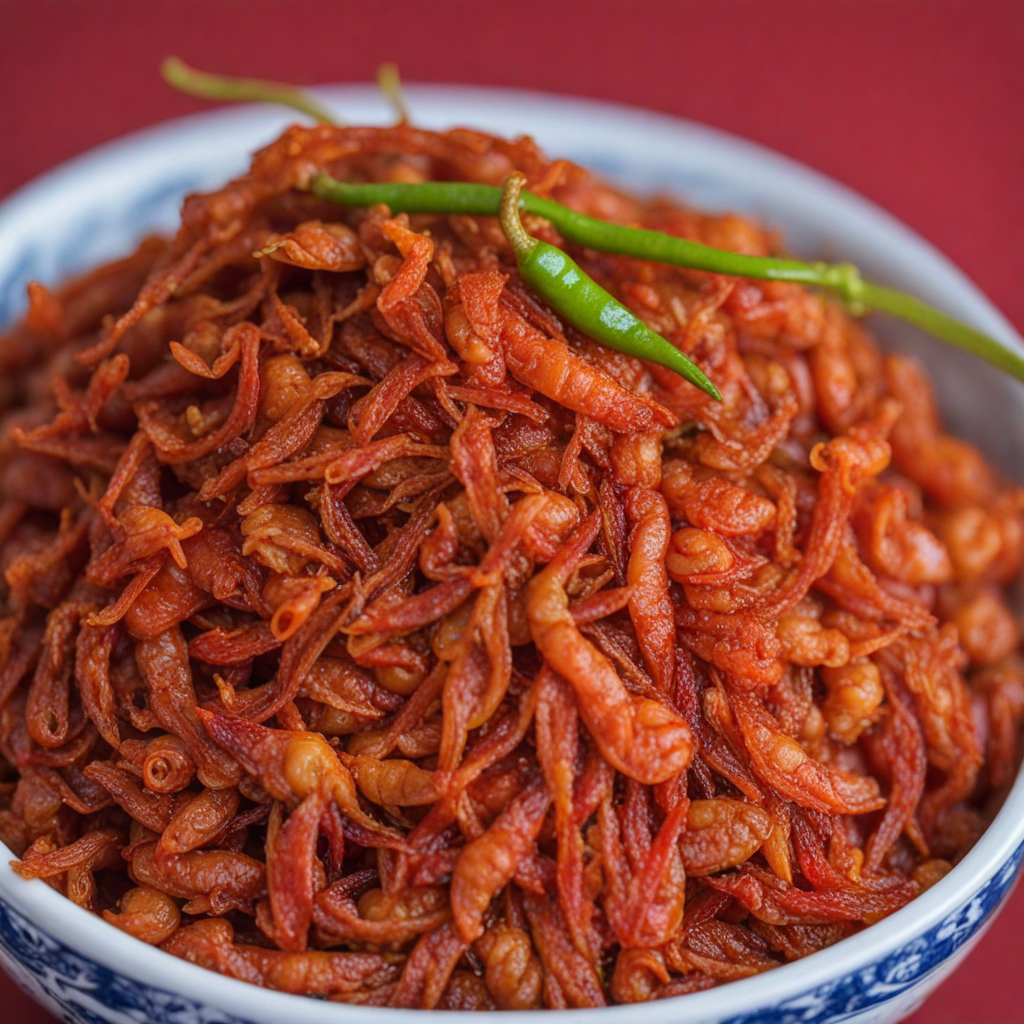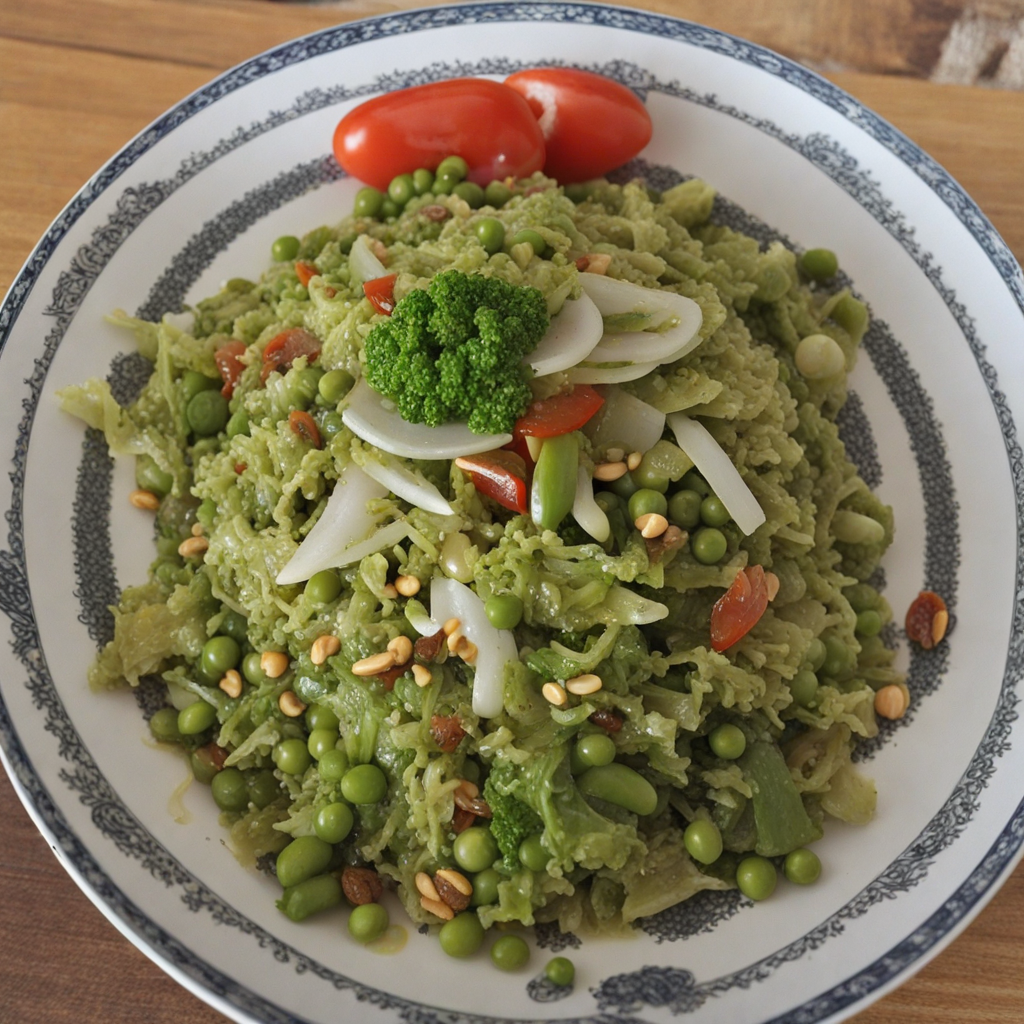Mohinga
Monhinkhar, a traditional dish from Myanmar, is a beloved rice noodle soup that showcases the country's rich culinary heritage. This dish is particularly popular in the central regions of Myanmar and is often enjoyed as a breakfast or lunch item. The name "Monhinkhar" translates to "rice noodle soup," reflecting its primary component—thin rice noodles that are typically served in a flavorful broth. The history of Monhinkhar dates back to the 19th century during the Konbaung Dynasty, where it is believed to have originated as a simple food enjoyed by the common people. Over the years, it has evolved into a more sophisticated dish, with various regional variations incorporating local ingredients and flavors. The dish is often associated with the Irrawaddy River delta, where fresh fish and local vegetables are abundant. Monhinkhar has become a staple in Myanmar’s culinary landscape, often served at family gatherings, festivals, and special occasions. The flavor profile of Monhinkhar is both complex and comforting. The broth is typically made from a base of fish, often catfish or other freshwater varieties, which imparts a rich umami flavor. This broth is usually seasoned with a combination of turmeric, garlic, ginger, and chili, creating a warm and fragrant aroma that is characteristic of many Burmese dishes. The addition of tamarind or lime gives it a subtle tanginess, balancing the richness of the fish. Topped with fresh coriander and sometimes crispy fried onions, Monhinkhar
How It Became This Dish
The History of မုန့်ဟင်းခါး: A Culinary Gem of Myanmar Introduction Among the vibrant tapestry of Myanmar's culinary traditions, one dish stands out with both cultural significance and historical depth: မုန့်ဟင်းခါး (Mont Hin Gar). This savory fish soup, often served with rice, has transcended its humble beginnings to become a beloved staple across the nation. Its journey through time reflects the rich tapestry of Myanmar's history, influenced by geography, trade, and cultural exchange. Origins The roots of Mont Hin Gar can be traced back to the central plains of Myanmar, particularly in the region surrounding Mandalay. The dish is believed to have originated among the Shan people, an ethnic group that has long inhabited the mountainous regions of eastern Myanmar. The name "Mont Hin Gar" itself signifies a fusion of elements—“Mont” meaning "to mix," while “Hin Gar” refers to "fish soup." Historically, fishing was a vital activity in Myanmar, given the country's extensive river systems and proximity to the Andaman Sea. The Irrawaddy River, in particular, provided an abundance of freshwater fish, which became a crucial protein source for local communities. These fishing traditions significantly influenced the development of Mont Hin Gar, leading to the use of locally sourced fish, such as catfish, which are well-known for their rich flavor and firm texture. Cultural Significance Mont Hin Gar is more than just a dish; it serves as a cultural emblem reflecting the communal spirit of Myanmar. In traditional settings, it is often enjoyed during festive occasions, family gatherings, and religious celebrations. The preparation and sharing of this dish foster a sense of belonging and kinship among the participants, reinforcing social bonds. In Myanmar's diverse society, Mont Hin Gar has also become a culinary bridge, uniting different ethnic communities. The dish can be found in various forms across the country, with each region adding its unique twist. For instance, in Mandalay, it is commonly served with a side of rice noodles, while in Yangon, it may be accompanied by fried bread or rice. This adaptability showcases the dish's versatility and the rich culinary dialogue that characterizes Myanmar's food culture. Moreover, the dish holds a significant place in the context of Buddhism, which has influenced Myanmar's culinary practices. As fish is a permissible protein in Buddhist dietary customs, Mont Hin Gar is often prepared during important religious observances, making it a dish of spiritual importance. The communal aspect of sharing this meal echoes the teachings of compassion and sharing inherent in Buddhist philosophy. Development Over Time As Myanmar underwent various historical changes—from colonial rule to independence—the culinary landscape, including Mont Hin Gar, evolved accordingly. During British colonial rule in the 19th and early 20th centuries, new ingredients and culinary techniques began to seep into the local cuisine. Influences from Indian, Chinese, and British culinary traditions introduced alternative spices and cooking methods, which were gradually incorporated into Mont Hin Gar. In the 20th century, with the rise of urbanization and globalization, Mont Hin Gar became more mainstream, moving from family kitchens to street vendors and restaurants. This transition highlighted the dish's accessibility and appeal to a broader audience. Street vendors began offering Mont Hin Gar as a quick and affordable meal option, making it a favorite among busy city dwellers. The simplicity of its ingredients—fish, lemongrass, turmeric, and a medley of herbs—made it easy to prepare in large quantities, further propelling its popularity. However, the dish's evolution was not without challenges. The political and economic turmoil in Myanmar, particularly during the latter half of the 20th century, affected food production and distribution. Access to fresh fish and other ingredients became inconsistent, leading to variations in the dish's preparation. Despite these challenges, Mont Hin Gar remained a beloved comfort food, embodying resilience and adaptability. Modern Interpretations In recent years, as Myanmar has opened up to the world, Mont Hin Gar has garnered international attention. Food enthusiasts and chefs are exploring traditional recipes, reviving interest in local culinary heritage. Contemporary interpretations of Mont Hin Gar have emerged, incorporating modern techniques and ingredients while maintaining the essence of the dish. Some chefs experiment with alternative proteins, such as tofu or even seafood like shrimp, catering to diverse dietary preferences while remaining true to the soup's spirit. Additionally, the rise of social media and food blogging has facilitated a renewed appreciation for traditional dishes. Food lovers share their Mont Hin Gar experiences, showcasing the dish's rich flavors and cultural significance. This digital renaissance has led to increased interest in Myanmar's cuisine, encouraging both locals and tourists to explore the culinary landscape more deeply. Conclusion Mont Hin Gar is not merely a dish; it is a testament to Myanmar's rich history, diverse cultures, and evolving culinary practices. Through its journey from humble origins to a beloved national treasure, Mont Hin Gar embodies the spirit of Myanmar—resilient, communal, and ever-evolving. As Myanmar continues to navigate the complexities of modernity, Mont Hin Gar remains a significant symbol of cultural identity, pride, and the enduring power of food to connect people across generations. Whether enjoyed in a bustling city or a quiet home, this savory fish soup will always hold a special place in the hearts of the Myanmar people, reflecting their rich heritage and communal spirit.
You may like
Discover local flavors from Myanmar


